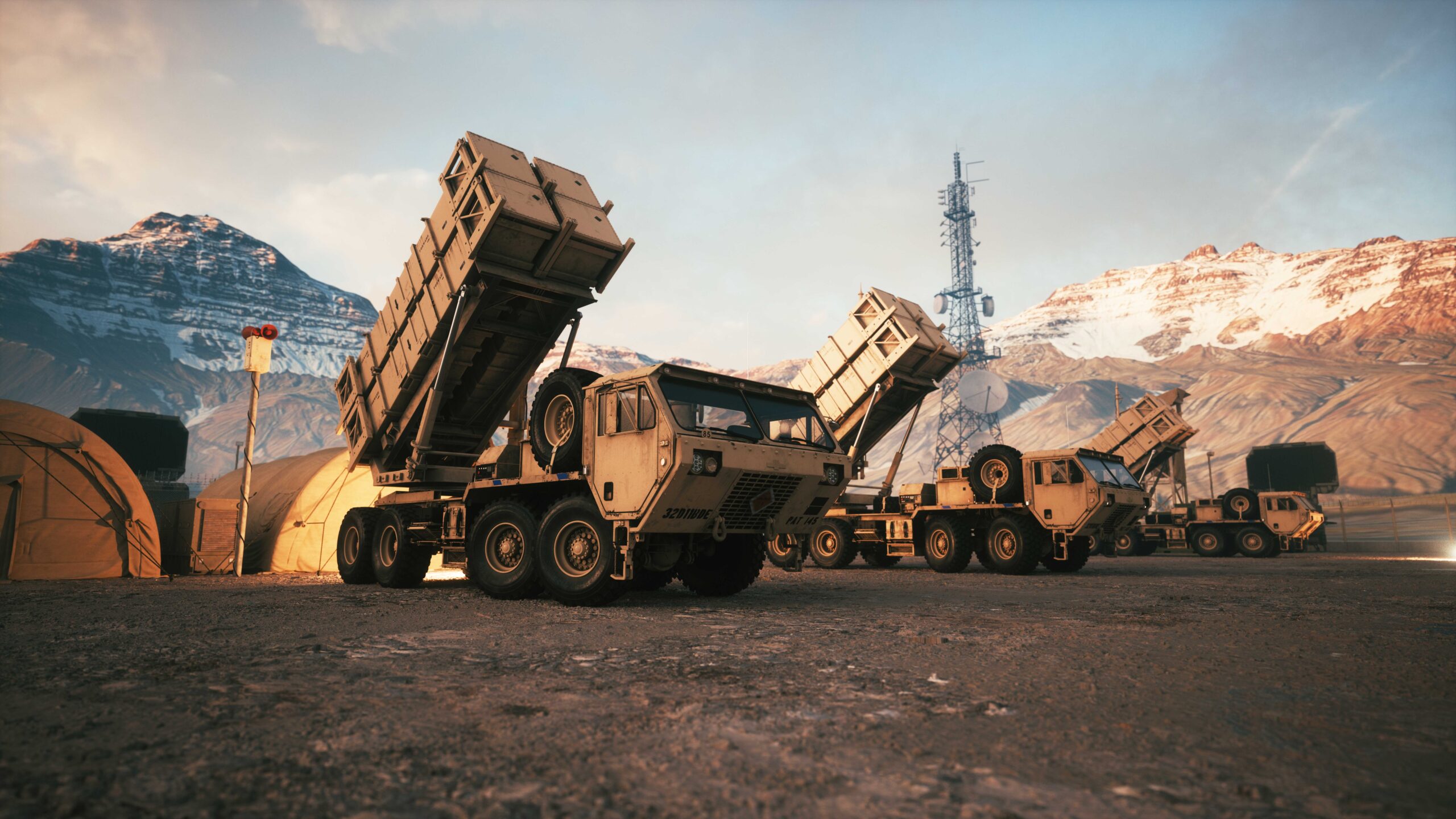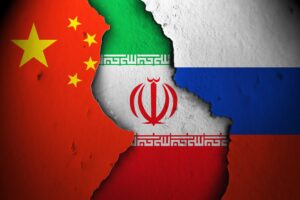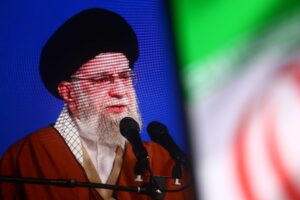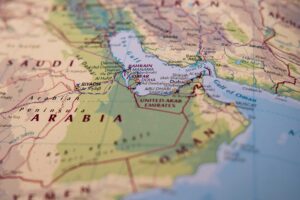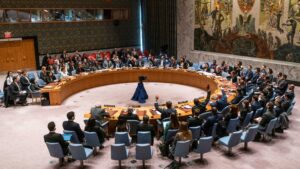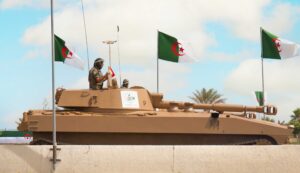Over the past three decades, the United States has made substantial financial and political investments to help its partners in the Middle East build and deploy effective missile defense systems. Today, that investment is paying off—and then some.
As someone who has worked on missile defense policy in the Pentagon, served as the lead missile defense staffer on the House Armed Services Committee, and led U.S. diplomatic efforts to improve regional cooperation at the State Department, this author has had a front-row seat to this effort. Missile defense cooperation between the U.S. and its allies and partners in the Middle East has been a strategic success. But success in the past does not guarantee success in the future. To meet the evolving threat landscape, the United States must adapt its approach and double down on emerging technologies and multilateral coordination.
Origins of U.S. missile defense cooperation in the Middle East
The foundation for U.S. missile defense partnerships in the region was laid during the 1991 Gulf War. Iraq’s ballistic missile attacks on Israel, Saudi Arabia, and Bahrain underscored the vulnerability of U.S. forces and regional partners to missile threats—and the urgent need for improved defenses.
In the years that followed, the United States built an exceptionally close missile defense partnership with Israel. This cooperation led to the joint development of some of the world’s most advanced missile defense systems, including the Iron Dome[i], the Arrow series[ii], and David’s Sling.[iii] In 2007, the U.S. deployed an X-band radar[iv] in Israel to support the mission, and the two countries have conducted dozens of joint missile defense exercises over the last quarter of a century.
Similar patterns emerged in the Gulf. Today, every Gulf Cooperation Council (GCC) state—except Oman—has procured advanced U.S. missile defense systems. Saudi Arabia, Bahrain, Kuwait, Qatar, and the United Arab Emirates (UAE) all operate variants of the Patriot missile defense system.[v][vi][vii] Both Saudi Arabia and the UAE have also acquired the Terminal High Altitude Area Defense (THAAD)[viii][ix] system.
Collectively, the Gulf states possess some of the most advanced missile defense systems in the world. Yet one major problem remains: these capabilities are largely stove-piped within national borders. Integration—the key to maximizing the efficiency and effectiveness of missile defense—has remained elusive.
The integration challenge
The value of integration is straightforward: by sharing radar data and operational information, states can increase the probability of successful interception while minimizing unnecessary launches and preserving limited interceptor inventories. Yet political hurdles, not technical ones, have been the primary obstacle to cooperation.
Recognizing this, the Obama administration launched a major diplomatic push to break through political resistance and build a multilateral missile defense framework in the Gulf. Secretary of State Hillary Clinton laid the groundwork at the inaugural U.S.-Gulf Security Forum in 2012[x], followed by Secretary of Defense Chuck Hagel’s call for integration at the 2013 Manama Dialogue. “A multilateral framework,” Hagel emphasized, “is the best way to develop interoperable and integrated regional missile defense.”[xi]
Those efforts culminated at the 2015 Camp David Summit between President Obama and the GCC heads of state.[xii] There, the parties announced their commitment to a region-wide ballistic missile early warning system and agreed to participate in a senior leader tabletop exercise to improve cooperation.
By the end of the Obama administration, the essential building blocks for integration were in place. The tabletop exercise was conducted in Kuwait in April 2016[xiii], the early warning study was completed later that year, and the GCC was designated as eligible to make multilateral purchases through the U.S. Foreign Military Sales program.
Trump and Biden: Continuity and contrast
Both the Trump and Biden administrations have sustained U.S. efforts to strengthen missile defense cooperation in the Middle East. While their approaches differ in tone and emphasis, both have viewed missile defense as essential to regional stability and U.S. strategic interests.
The Trump administration emphasized arms sales and burden sharing, viewing defense exports as a tool for both strategic alignment and economic benefit. During Trump’s tenure the United States finalized a $15 billion deal to sell THAAD to Saudi Arabia.[xiv] Gulf states continued acquiring Patriot PAC-3 systems to expand their lower-tier defenses, while U.S. support for Israeli missile defense programs remained robust, with consistent congressional funding and industrial cooperation.
However, the Trump team was less focused on building multilateral coordination frameworks among GCC members. Its primarily bilateral approach delivered capabilities but did not significantly enhance integration.
Whereas the Trump administration focused primarily on bilateral missile defense cooperation with regional partners, between 2021-2024, the Biden administration complemented bilateral work with more multilateral efforts through U.S. Central Command to ensure more interoperability between the Gulf states and other regional partners. And since returning to office in January 2025, in its second term, the Trump administration has continued to advance missile defense cooperation with regional partners including through major sales of missile defense and other military equipment to Saudi Arabia, the United Arab Emirates, and Qatar. In addition to these sales, Qatar agreed to make major infrastructure upgrades at Al Udeid Air Base, and the UAE formalized an upgraded defense partnership with the United States, including new cooperation under the Major Defense Partnership[xv] and the National Guard State Partnership Program[xvi]—both aimed at advancing integrated air and missile defense collaboration.
Operational validation and the need to evolve
Recent conflicts in the region have demonstrated the strategic value of U.S. missile defense cooperation in the Middle East. For example, Saudi Arabia and the UAE have repeatedly used missile defense systems to intercept ballistic missile attacks launched by Houthi forces in Yemen to protect their territory.
That said, vulnerability of regional defenses was made clear in September 2019, when Iranian cruise missiles and drones struck Saudi oil facilities at Abqaiq and Khurais.[xvii] The attack temporarily damaged half of Saudi Arabia’s oil production and highlighted the limitations of traditional missile defense systems and the need to address the growing threat of combined ballistic missile, cruise missile, and drone attacks.
Luckily, these lessons were learned quickly and integrated into U.S. and allied air and missile defense doctrines. This improved coordination was clearly demonstrated during Iran’s large-scale missile and drone assault on Israel in April 2024.[xviii] In response to these attacks, the United States—alongside the United Kingdom, France, Jordan, and Israel—intercepted the vast majority of inbound threats, negating Iran’s attempt to gain a strategic advantage from the attacks.
And again, during the “12-Day War” in June 2025, Israel and the United States defeated multiple Iranian missile and drone attacks against Israel. Furthermore, U.S. Patriots deployed in Qatar successfully intercepted Iranian missiles targeting American personnel and facilities in the country.[xix]
What comes next?
There are several key areas where improvement is needed.
- Replenishing interceptor stocks and expanding production capacity. The wars in Ukraine and the Middle East have drained interceptor inventories. Israel, in particular, has expended significant stocks of Iron Dome and David’s Sling interceptors. The United States faces similar challenges due to both the wars in the Middle East and Ukraine, and therefore must invest in replenishment and expand industrial capacity to meet current and future demand.
- Breaking the cost-exchange trap. Missile defense has long struggled with the “cost-exchange ratio”—where it is far more expensive to intercept a missile than to launch one. As this author has written elsewhere[xx], to address this imbalance, the U.S. and its partners must accelerate the development and deployment of breakthrough technologies, including high-energy lasers, high-power microwaves, and AI-enabled autonomous vehicles and interceptors. Additionally, Israel has recently made important strides in directed-energy systems that could reshape the economics of missile defense.
- Embracing left-of-launch strategies. Not every missile must be intercepted in flight. Disrupting attacks before they launch—through cyber operations, electronic warfare, or sabotage—can reduce the burden on missile defense systems and increase overall effectiveness. These “left-of-launch” capabilities must be further developed and fully integrated into regional defense planning.
- Countering integrated drone-missile attacks. Iran’s attacks on Saudi Arabia in 2019 and on Israel in 2024 and 2025 demonstrated the increasing use of combined drone and missile salvos. The blending of low-cost drones with advanced ballistic or cruise missiles presents new challenges for traditional defense systems. A priority must be placed on developing layered defenses that can handle this complex threat environment.
- Deepening regional integration. Finally, the United States and its regional partners must continue their efforts to promote regional air and missile defense integration. This includes more frequent joint exercises, real-time data sharing, and the development of interoperable command-and-control systems.
Conclusion
Missile defense cooperation between the United States and its partners in the Middle East has been one of the quiet success stories of U.S. national security policy. It has helped deter aggression, protect civilians and military personnel, and manage crises at critical junctures.
But that cooperation must evolve. The threats are faster, more sophisticated, and more integrated. And the strategic landscape is shifting beneath our feet.
Now is the time to invest—not just in systems and sensors, but in trust, coordination, and breakthrough technologies. The United States must lead, and its partners must follow. If they get it right, the payoff will be measured in lives saved and wars prevented.
[i] Rafael (2025). ‘Iron Dome Family’, retrieved from: https://www.rafael.co.il/system/iron-dome/.
[ii] DBpedia (2025). ‘Arrow (missile family)’, retrieved from: https://dbpedia.org/page/Arrow_(missile_family).
[iii] Rafael (2025). ‘David’s Sling’, retrieved from: https://www.rafael.co.il/system/medium-long-range-defense-davids-sling/.
[iv] Raytheon (2025). ‘AN/TPY-2: Army Navy/Transportable Radar Surveillance’, retrieved from: https://www.rtx.com/raytheon/what-we-do/strategic-missile-defense/antpy-2.
[v] U.S. Army AMCOM (2025). ‘Patriot’, retrieved from: https://history.redstone.army.mil/miss-patriot.html.
[vi] Richardson, D. (2023). ‘Ground-Based Air Defence in the Gulf Region’, European Security & Defence, 8 March 2023, retrieved from: https://euro-sd.com/2023/03/articles/29971/ground-based-air-defence-in-the-gulf-region/.
[vii] Helou, A. (2024). ‘Bahrain receives first PAC-3 MSE shipment from Lockheed Martin’, Breaking Defense, 6 March 2024, retrieved from: https://breakingdefense.com/2024/03/bahrain-receives-first-pac-3-mse-shipment-from-lockheed-martin/.
[viii] Lockheed Martin (202510. ‘Terminal High Altitude Area Defense (THAAD)’, retrieved from: https://www.lockheedmartin.com/en-us/products/thaad.html.
[ix] Bne Intellinews (2025). ‘Saudi Arabia activates first Thaad missile defence system’, 3 July 2025, retrieved from: https://www.intellinews.com/saudi-arabia-activates-first-thaad-missile-defence-system-389287/.
[x] National Council on US-Arab Relations (2012). ‘Joint Communique from the 2nd U.S.-GCC Strategic Cooperation Forum’, 4 October 2012, retrieved from: https://ncusar.org/blog/2012/10/joint-communique-from-us-gcc-strategic-cooperation-forum/#gsc.tab=0.
[xi] Iran Watch (2013). ‘Speech by Secretary of Defense Chuck Hagel at the IISS Manama Dialogue’, 7 December 2013, retrieved from: https://www.iranwatch.org/library/governments/united-states/executive-branch/department-defense/speech-secretary-defense-chuck-hagel-iiss-manama-dialogue-excerpts.
[xii] Cordesman, A.H. (2015). ‘More than Keeping Up the Façade: The U.S.-GCC Summit at Camp David’, Center for Strategic and International Studies (CSIS), 15 May 2015, retrieved from: https://www.csis.org/analysis/more-keeping-facade-us-gcc-summit-camp-david.
[xiii] The White House (2016). ‘United States-Gulf Cooperation Council Second Summit Leaders Communique’, 21 April 2016, retrieved from: https://obamawhitehouse.archives.gov/the-press-office/2016/04/21/united-states-gulf-cooperation-council-second-summit-leaders-communique#:~:text=Leaders%20committed%20to%20continue%20coordinating,military%20preparedness%2C%20and%20cyber%20security.
[xiv] Arms Control Association (2019). ‘THAAD Sale to Saudi Arabia Moves Forward’, retrieved from: https://www.armscontrol.org/act/2019-04/news-briefs/thaad-sale-saudi-arabia-moves-forward.
[xv] U.S. Department of Defense (2025). ‘Joint Press Statement on U.S.-UAE Major Defense Partnership’, 16 May 2025, retrieved from: https://www.defense.gov/News/Releases/Release/Article/4189772/joint-press-statement-on-us-uae-major-defense-partnership/.
[xvi] US Mission to UAE (2025). ‘The UAE has officially joined the U.S. National Guard State Partnership Program…’, X, 20 May 2025, retrieved from: https://x.com/USAinUAE/status/1924742441208344780.
[xvii] Hubbard, B., Karasz, P. and Reed, S. (2019). ‘Two Major Saudi Oil Installations Hit by Drone Strike, and U.S. Blames Iran’, The New York Times, 15 September 2019, retrieved from: https://www.nytimes.com/2019/09/14/world/middleeast/saudi-arabia-refineries-drone-attack.html.
[xviii] Diamond, J. et al. (2024). ‘Iran launches unprecedented retaliatory strikes on Israel in major escalation of widening conflict’, CNN World, 14 April 2024, retrieved from: https://edition.cnn.com/2024/04/13/middleeast/iran-drones-attack-israel-intl-latam.
[xix] Ceder, R. (2025). ‘Navy destroyers intercepted Iranian missiles, service confirms’, Navy Times, 30 June 2025, retrieved from: https://www.navytimes.com/news/your-navy/2025/06/30/navy-destroyers-intercepted-iranian-missiles-service-confirms/.
[xx] Rose, F.A. (2025). ‘Nine steps to make Golden Dome a true success’, Breaking Defense, 12 June 2025, retrieved from: https://breakingdefense.com/2025/06/nine-steps-to-make-golden-dome-a-true-success/.

